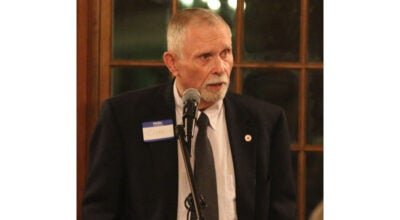Gold in the Klondike
Published 3:22 pm Saturday, May 20, 2017
by James Howell
No town is more closely associated with the rush to Yukon gold than Skagway. Prospective millionaires came from farms, cities, towns and other countries to endure backbreaking labor, death-dealing exposure and all manner of cons and thieves in their quest for the shiny stuff.
Directly across the wide wharf from our ship is a set of railroad tracks, bearing a series of sightseeing coaches. We’re going to take the train to the White Pass, where gold seekers crossed over into Canada for the first leg to the Dawson City in the Yukon Territory. From there, they could spread up the Klondike River to where the first large deposits were reportedly found, or down the Yukon to other claims.
Gold fever developed two main routes from the United States — Dyea to the Chilkoot Pass and Skagway to the White Pass. Both wound up at Lake Bennett, where boats could be built for the journey down the Yukon. More prospectors used the Chilkoot than the White Pass. Adventure seekers, writers and photographers recorded many of the hardships of both.
Our trip today will be via railcar; the White Pass & Yukon railroad was built for the goldfield traffic and was completed in 1900. The ease of access did not increase the number of prospectors; the rush was essentially over. Dyea fell by the wayside; only Skagway remains. Today, we will travel in style, roughly paralleling the footpath.
We load up and head out in high spirits for Lake Bennett. It is, after all, in Canada, and this is an international trip. It’s a bright day and at many points along the way, the White Pass trail is plainly marked on the opposite side of the creek. We take a brief break on the far side of the mountain and head back down.
In Skagway, I peruse the leaflets and decide to take the National Park Service’s walking tour. My experience with the NPS says that it will be informative and as accurate as possible.
We meet at the visitors center; our guide is animated and interesting. The tour begins with an explanation of what was required by the Northwest Mounted Police. My mind immediately sees Nelson Eddy singing to Jeanette MacDonald in the movie “Rose-Marie.” No such romanticism here, however. It was a bitter, mind-numbing experience that left most would be miners to quit, some here, some further along the route.
A full year’s provisions had to be in place and signed off on by the Canadian police before any miner was permitted into Canada. The lessons were hard learned by the Mounties during the run up to the stampede. Death was a lonely and frequent experience.
Laid out in the foyer of the welcome center is an exhibit of what supplies were required; it varied a bit, but most guesses are that the whole weighed around 2,000 pounds. This must be packed up the trail and over the mountain pass in loads of about 65 pounds each. Some hired bearers; some used pack horses, but most carried it on their backs. The White Pass trail became known as the Dead Horse Trail because of the death rate. Animals were left where they fell.
We leave the Railroad Headquarters/Visitors Center and walk the short way up Broadway to the Mascot Saloon, an authentic watering hole built and operated during and after the gold rush. Most of its history is recorded in official documents; the interior and exterior has undergone numerous changes. The Park Service is in process of restoring it to its glory days, minus the fights, shootings and other assorted happenings.
The Park Ranger points out that when electricity came to Skagway, the bill was according to how many light bulbs were used. If you came up short, we assume that the electric company took away the bulbs. Or if you wanted a lower bill, you removed a bulb or two.
The walk up Broadway takes us by the distinctive front of the Arctic Brotherhood’s building. The civic organization had its beginnings in the gold rush, but persevered long after the last miner left. Most tourists take a picture or two, including me.
Structures were expensive, and when someone left they sold or abandoned their building. Many of those buildings were moved and became part of present day structures. Smaller buildings on the south side were houses of ill repute, pointed out with a slight smile.
We end the tour at the Moore homestead. The Moore family settled in this valley long before the gold rush began. They predicted the stampede and established the White Pass trail. Their original log cabin still stands near the present home.
Tired and happy, we return to the ship with stories for dinner.
JAMES D. “ARCHIE” HOWELL is a Southampton County native and 1955 graduate of Franklin High School. He can be reached at archiepix@kingwoodcable.com.





